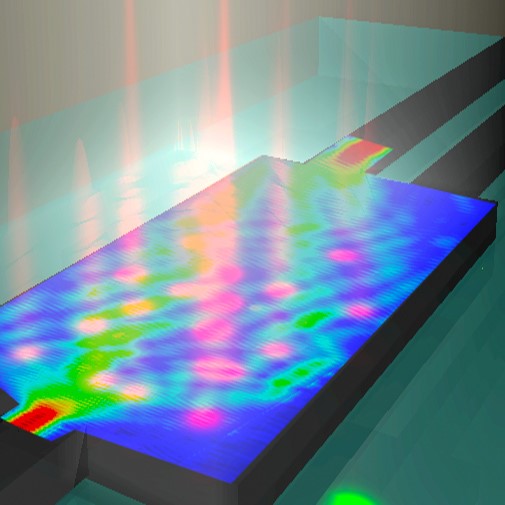Southampton researchers aim for programmable optical chips
Researchers from the University of Southampton and the Institut d’Optique in Bordeaux, France have devised a new approach for controlling light in a silicon chip that could make them programmable.
Silicon photonics are forming the backbone of next-generation on-chip technologies and optical telecommunication, which are aimed at a wide range of emerging applications including optical interconnects, microwave photonic circuits, and integrated optical sensors.
The function of a photonic chip is usually hard-wired, but having reconfigurable optical elements would allow light to be routed flexibly, opening up new applications in programmable photonic circuits.
Traditional spatial light modulators use liquid crystals or micromirrors to provide many independently controllable pixels, and this has revolutionised optics in recent years, with many applications in imaging and holography and adaptive optics.
In their new work, presented in the April issue of the journal Optica, the team makes use of multimode interference (MMI) devices which are usually fixed. However, the team shows that different modes travelling through the MMI can be dynamically controlled using a femtosecond laser. This acts to effectively shape the transmitted light, allowing some modes through and restricting others.
 Using a silicon-on-insulator 1 x 2 multimode interference splitter with a projected pattern of perturbations induced by the femtosecond laser, the perturbation pattern achieves routing of light to a single output port with 97 per cent efficiency, essentially making the device programmable.
Using a silicon-on-insulator 1 x 2 multimode interference splitter with a projected pattern of perturbations induced by the femtosecond laser, the perturbation pattern achieves routing of light to a single output port with 97 per cent efficiency, essentially making the device programmable.
“We have demonstrated a very general approach to beam shaping on a chip that provides a wide range of useful functionalities to integrated circuits. The integrated spatial light modulator turns conventional silicon photonics components into versatile reconfigurable element,” said lead author Roman Bruck, a postdoctoral researcher at the University of Southampton.
Practical applications of this technology will include all-optical reconfigurable routers, ultrafast optical modulators and switches for optical networks and microwave photonic circuits as well as wafer-scale optical testing of photonic chips. More work is needed to develop these ideas into practical applications.
Principal investigator Professor Otto Muskens, from Physics and Astronomy at the University of Southampton, said: “There are many new directions to explore, from gaining a deeper understanding to application of the new concepts into real-world devices. This is a potentially disruptive new approach toward field-programmable chips which can enhance and complement existing strategies, or even partially replace current technology.”
The study ‘All-optical spatial light modulator for reconfigurable silicon photonic circuits’ R. Bruck, K. Vynck, P. Lalanne, B. Mills, D. J. Thomson, G. Z. Mashanovich, G. T. Reed, and O. L. Muskens, Optica 3(4), 396-402 (2016) can be viewed at https://www.osapublishing.org/
